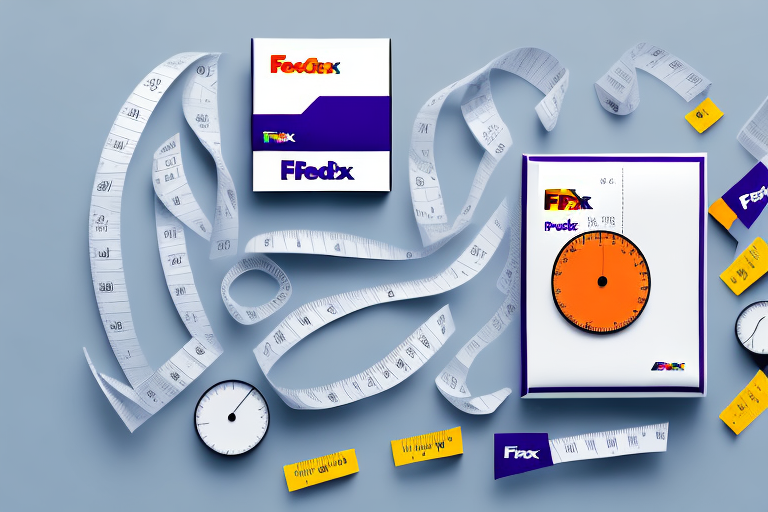Understanding FedEx Shipping Weight Rates
Whether you're a frequent FedEx shipper or considering their services for your business needs, comprehending FedEx shipping weight rates is crucial. Shipping costs with FedEx can fluctuate significantly based on factors such as package weight, dimensions, shipment type, and destination. This article delves into the intricacies of how FedEx calculates shipping weight rates, the key factors influencing these rates, methods to calculate them, and practical tips to minimize your shipping expenses.
Why Shipping Weight Rates Vary for Different Packages
Shipping weight rates vary for each package primarily due to differences in weight and size. FedEx employs a dimensional weight (DIM) pricing system, which considers both the size and weight of a package. This means a small yet heavy package might incur higher shipping costs compared to a larger but lighter one. The rationale behind this is that larger packages occupy more space in transportation vehicles, leading to increased fuel consumption and operational costs.
Additionally, the destination plays a significant role in determining shipping rates. The distance a package travels and the mode of transportation (air, ground, etc.) can impact costs. For instance, international shipments generally cost more than domestic ones. Expedited shipping options, such as overnight or same-day delivery, also entail higher expenses. It's essential to factor in all these elements when estimating your shipping costs.
How FedEx Determines Shipping Weight Rates
FedEx calculates shipping weight rates through a systematic process:
- Weigh the Package: The actual weight of the package is measured using accurate scales.
- Measure Dimensions: The length, width, and height of the package are recorded to determine its size.
- Calculate Dimensional Weight: Using the formula (L x W x H) / DIM Factor, FedEx calculates the dimensional weight. The DIM factor varies based on shipment type and destination.
- Compare Weights: If the dimensional weight exceeds the actual weight, the shipping charge is based on the dimensional weight; otherwise, the actual weight is used.
It's important to note that FedEx utilizes different DIM formulas for domestic and international shipments. For more detailed information, refer to FedEx's official Dimensional Weight Guidelines.
Moreover, the contents of the package influence shipping rates. Items categorized as hazardous, fragile, or perishable require special handling and packaging, which can result in increased costs. Ensuring proper labeling and packaging is vital to avoid additional fees and ensure the safe delivery of your items.
What Factors Affect Shipping Weight Rates?
Several elements impact FedEx shipping weight rates, including:
- Package Weight and Size: Heavier and larger packages generally cost more to ship.
- Origin and Destination: Longer distances and international destinations increase shipping costs.
- Shipping Speed: Faster delivery options like overnight shipping are pricier than standard ground services.
- Package Content: Hazardous or fragile items may incur additional fees.
- Seasonality: Peak seasons, such as the holiday period, often see higher shipping rates due to increased demand.
- Carrier Choice: Comparing rates across different carriers can help identify the most cost-effective option for your specific needs.
Understanding these factors allows you to make informed decisions and manage your shipping expenses effectively.
How to Calculate the Shipping Weight of Your Package
Calculating the shipping weight involves two primary measurements: actual weight and dimensional weight.
- Weigh the Package: Use a reliable scale to determine the package's actual weight.
- Measure Package Dimensions: Measure the length (L), width (W), and height (H) of the package in inches.
- Calculate Dimensional Weight: Apply FedEx’s DIM formula: (L x W x H) / 139 (for domestic shipments). The DIM factor may vary for international shipments.
Compare the actual weight and dimensional weight:
- If Dimensional Weight > Actual Weight: Shipping costs are based on dimensional weight.
- If Actual Weight > Dimensional Weight: Shipping costs are based on actual weight.
For detailed guidance, visit FedEx’s Dimensional Weight Calculation Guide.
Remember, different carriers may use varying DIM formulas, so always verify with your chosen carrier.
Tips to Reduce the Shipping Weight of Your Package
Minimizing shipping costs is achievable by implementing the following strategies:
- Select Lightweight Packaging: Use materials like air pillows or bubble wrap instead of heavier options like foam peanuts.
- Optimize Package Size: Reduce the size of your packaging to lower the dimensional weight.
- Remove Unnecessary Items: Eliminate any excess or non-essential items from the package.
- Avoid Special Handling Items: Refrain from shipping items that require special handling to prevent additional fees.
- Use Shipping Calculators: Compare rates from different carriers to find the most cost-effective option.
Implementing these tips can lead to significant savings on your shipping expenses.
How to Choose the Right Packaging Materials to Reduce Weight
Choosing appropriate packaging materials is pivotal in reducing shipping weight and costs. Opt for materials that are both lightweight and durable:
- Corrugated Boxes: Select lighter versions without compromising strength.
- Bubble Mailers: Ideal for smaller, less fragile items.
- Paper Wraps: Use instead of heavier protective materials.
Proper packaging not only minimizes weight but also ensures the safe delivery of your goods.
Understanding Dimensional Weight and Its Impact on Shipping Costs
Dimensional weight (DIM) is a pricing methodology that considers both the size and weight of a package. It is calculated using the formula:
DIM Weight = (Length x Width x Height) / DIM Factor
The DIM factor varies by carrier and shipment type. For FedEx, the standard DIM factor for domestic shipments is typically 139. This means that larger, lightweight packages may be charged based on their size rather than actual weight, potentially leading to higher costs.
Understanding DIM weight allows you to optimize package dimensions and reduce shipping fees. For a more comprehensive overview, refer to FedEx’s Dimensional Weight Information.
How to Compare FedEx's Shipping Rates with Other Carriers
Comparing shipping rates across different carriers can help you identify the most economical option for your needs. Here's how to effectively compare rates:
- Use Online Shipping Comparison Tools: Platforms like ShipScience's Shipping Comparison Tool allow you to input package details and compare rates across carriers.
- Consider All Variables: Ensure you're comparing the same service levels, delivery times, and additional features.
- Evaluate Carrier Reliability: Beyond cost, consider factors like delivery speed, reliability, and customer service.
By conducting thorough comparisons, you can choose the carrier that offers the best balance of cost and service quality for your shipping requirements.
Frequently Asked Questions About FedEx Shipping Weight Rates
Here are some common questions regarding FedEx shipping weight rates:
1. How Can I Reduce My FedEx Shipping Weight Rates?
To lower your FedEx shipping weight rates, consider the following strategies:
- Choose lightweight and durable packaging materials.
- Minimize the size of your packaging to reduce dimensional weight.
- Eliminate unnecessary items from your package.
- Avoid shipping items that require special handling.
2. How Can I Calculate the Shipping Weight of My Package?
Calculating the shipping weight involves:
- Weighing the package using an accurate scale.
- Measuring the package’s dimensions (length, width, height).
- Applying FedEx’s DIM formula: (L x W x H) / 139.
- Comparing actual and DIM weight to determine which is higher for pricing.
For detailed guidance, refer to FedEx’s Dimensional Weight Calculation Guide.
3. Can I Compare FedEx's Shipping Rates with Other Carriers?
Yes, you can compare FedEx's shipping rates with other carriers using online shipping comparison tools. Keep in mind that rates can vary based on package size, weight, shipping speed, and destination, so ensure all variables are consistent when making comparisons.
Understanding Special Handling Fees and How to Avoid Them
Special handling fees may apply if your package requires additional care due to its contents or packaging. Common scenarios include:
- Fragile Items: Glassware, electronics, and other delicate items may incur extra fees for protective packaging.
- Hazardous Materials: Items like batteries, chemicals, or flammable materials require special handling and documentation.
- Oversized Packages: Packages exceeding standard size and weight limits may be subject to additional charges.
To avoid these fees, ensure proper packaging, adhere to FedEx’s guidelines, and accurately declare the contents of your shipment.
How to Save Money on FedEx Shipping by Optimizing Package Size and Weight
Optimizing package size and weight is a straightforward way to reduce FedEx shipping costs. Here’s how:
- Use Appropriately Sized Packaging: Choose packaging that snugly fits your items to avoid unnecessary space and weight.
- Select Lightweight Materials: Opt for materials like poly mailers or lightweight boxes to decrease overall weight.
- Remove Excess Packaging: Avoid overpacking by eliminating unnecessary fillers and using just enough to secure the items.
- Combine Shipments: If feasible, consolidate multiple items into a single package to reduce the number of shipments.
By implementing these practices, you can lower both dimensional and actual weight, resulting in significant cost savings.
Shipping Tips for Small Business Owners Using FedEx Services
Small business owners can benefit from the following FedEx shipping tips:
- Choose the Right Packaging: Select packaging materials that are appropriate for your products and optimize for weight and size.
- Request a Pickup: Save time and transportation costs by scheduling FedEx pickups instead of delivering packages to a FedEx facility.
- Reduce Packaging Size and Weight: Implement strategies to minimize package dimensions and weight to lower shipping costs.
- Leverage Volume Discounts: Take advantage of FedEx’s volume discount programs if you ship frequently.
- Ship Smartly: Package items together when possible and choose the most cost-effective shipping method based on delivery requirements and budget.
Understanding International Shipping Weight Rates and Restrictions
International shipping with FedEx involves additional considerations that can affect weight rates:
- Customs Duties and Taxes: Different countries impose varying import duties and taxes, which can impact overall shipping costs.
- Size and Weight Restrictions: Each destination country has specific size and weight limits for shipments.
- Prohibited and Restricted Items: Certain items may be restricted or prohibited in specific countries, leading to potential fees or shipment delays.
- Shipping Speed Options: International shipping speeds, such as express or economy, come with different pricing models.
To navigate these complexities, review FedEx’s International Shipping Guidelines and ensure compliance with all regulations to avoid additional fees and ensure smooth delivery.
How to Track and Manage Your FedEx Shipments Efficiently
Efficient tracking and management of your FedEx shipments are essential for timely deliveries and resolving any transit issues:
- Use FedEx Tracking: Utilize FedEx’s online tracking system to monitor your shipment’s status in real-time.
- Set Up Alerts: Receive automatic updates via email or SMS about your shipment’s progress and any potential delays.
- Manage Deliveries: Use FedEx Delivery Manager to customize delivery preferences, such as altering delivery times or locations.
- Communication: Maintain open communication channels with FedEx customer service for any assistance or inquiries.
Effective shipment management helps in mitigating delays and ensures that your packages reach their destinations as planned.
In conclusion, a thorough understanding of FedEx's shipping weight rates empowers you to optimize your shipping strategies, reduce costs, and enhance the efficiency of your logistics operations. By implementing the tips and strategies outlined above, you can achieve cost-effective and reliable shipping solutions tailored to your specific needs.






















